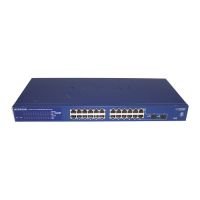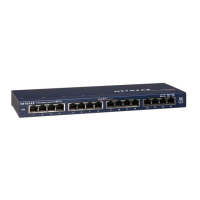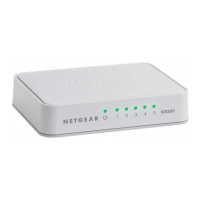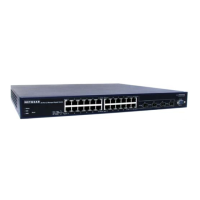Configure System Information
89
S3300 Smart Managed Pro Switch
multiple links can be connected to an adjacent unit to form a higher bandwidth stacking
connection. This is referred to as Multiple Stack Links.
The following restrictions and limitations apply when using Multiple Stack Links:
• Fiber link takes precedence over the copper link
• When fiber link is present between the stacked units, traffic is always carried through the
fiber link, whether over a single link or over two links in a trunk.
- This happens irrespective of one or two copper links present
- Copper link, in the presence of fiber link, always acts as standby and does not
participate in carrying traffic. However, when the fiber links are down/removed, the
copper link becomes active and starts carrying traffic. This operation (known as
switchover between the links) does not destabilize the stack.
In a multi-unit stack of S3300-52X and/or S3300-52X-PoE+, the following apply:
• One or both copper links between two adjacent S3300 units can be connected to form a
Stack.
• One or both fiber links between two adjacent S3300 units can be connected to form a
stack.
• Both methods above can be used to form a stack of more than two units.
- A Stack of three units (Unit-A, Unit-B, Unit-C) can be formed by connecting Unit-A and
Unit-B over two fiber links, and Unit-B and Unit-C over two copper links. This will
make the effective stacking bandwidth between the units ~20G.
- If a combination of one copper and one fiber is chosen between the units (A-B and
B-C), the stack will still form, but the effective stacking bandwidth will be limited to
~10G.
• As an exception to this, if the stack is formed with only S3300-28X and/or
S3300-28X-PoE+ units, the above restriction does not apply.
- The user is free to choose any combination of copper and fiber links to form a stack
without compromising on bandwidth.
- Use of one copper and one fiber to form a stack will still give ~20G bandwidth in case
all the units participating in the stack are S3300-28X and/or S3300-28X-PoE+.
In summary,
• Fiber link takes precedence over the copper link
• When fiber link is present between the stacked units, traffic is always carried through the
fiber link, whether over a single link or over two links in a trunk
- This happens irrespective of one or two copper links present
- Copper link, in the presence of fiber link, always acts as standby and does not
participate in carrying traffic. However, when the fiber links are down/removed, the
copper link becomes active and starts carrying traffic. This operation (known as
switchover between the links) does not destabilize the stack.
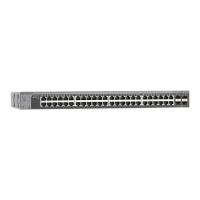
